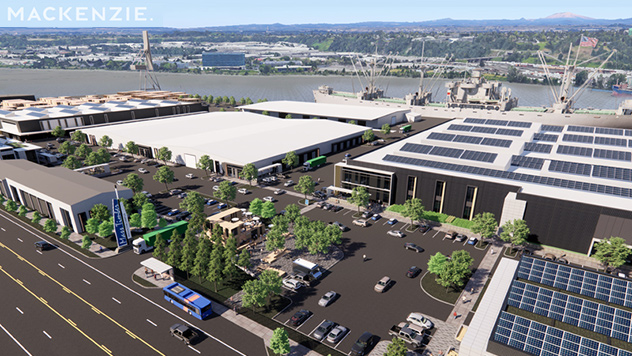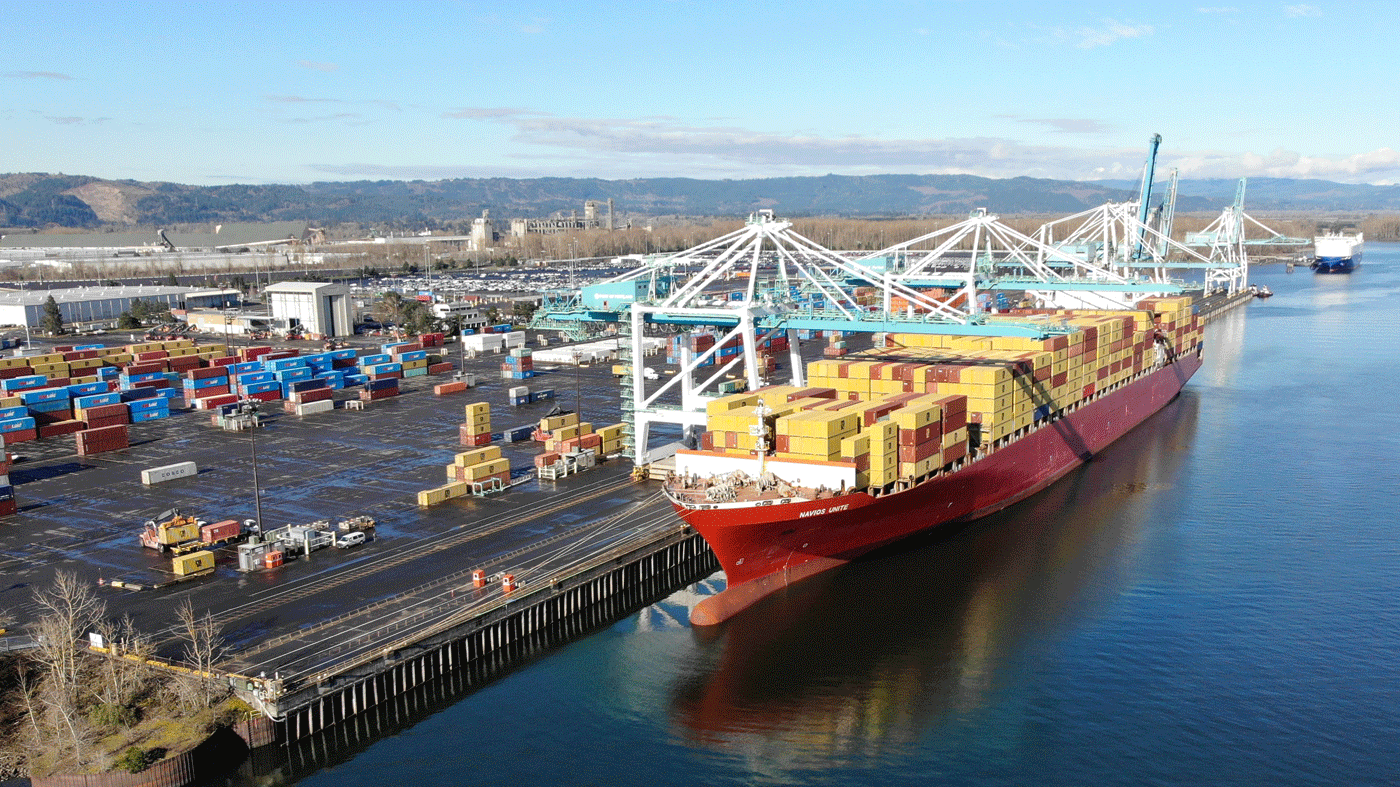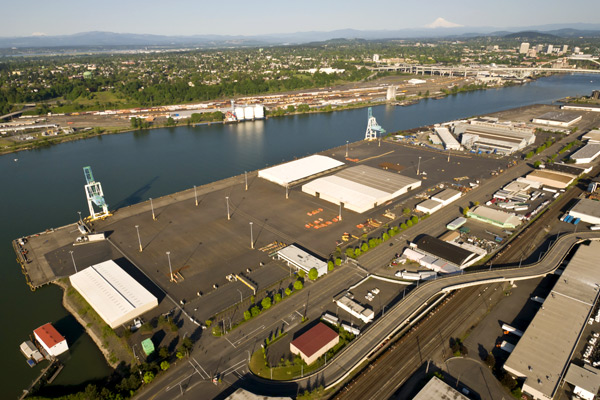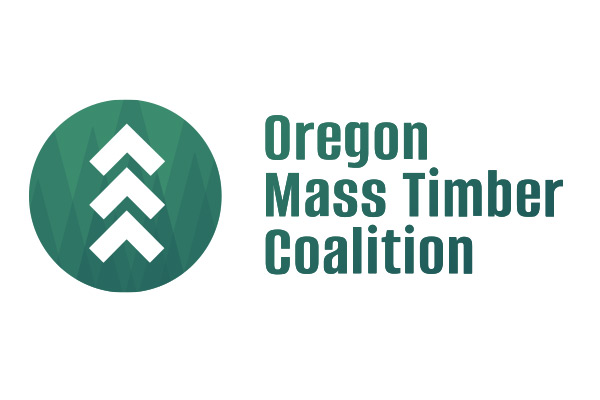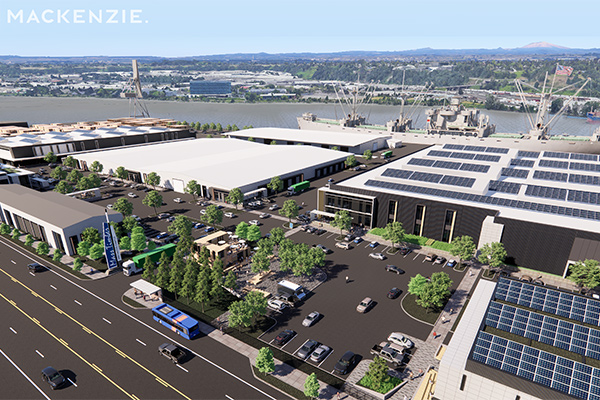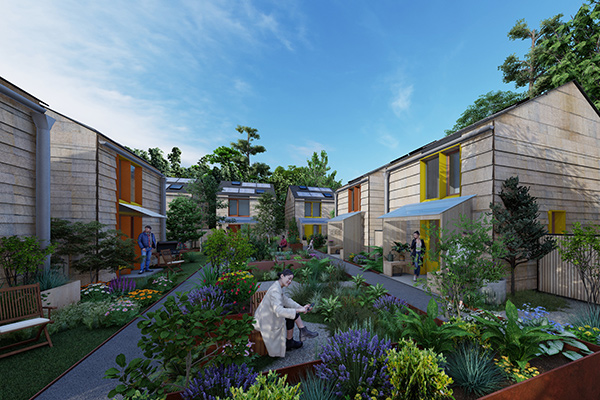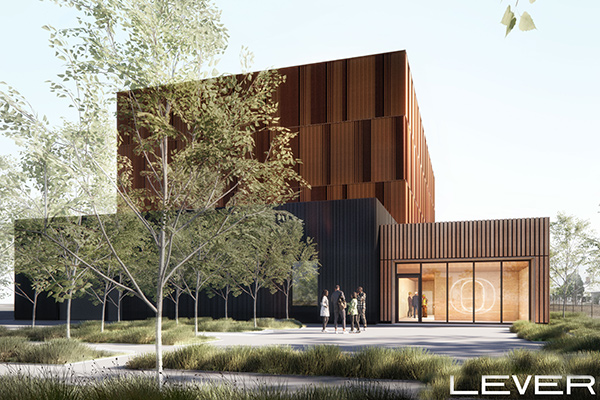How is the Port helping solve Oregon's housing crisis? 8 questions for Ken Anderton
In his 23 years with the Port of Portland, Ken Anderton has led the development of Port-owned airport real estate and industrial land, including the transformation of a former Superfund site in Troutdale and a greenfield site in Gresham into thriving business parks. A self-described “housing geek” with a bachelor’s degree in airport management and an MBA in international trade, Ken is currently the Port’s Senior Manager of Real Estate Development, Investment and Leasing.
Today, as more Oregonians struggle to find affordable housing to buy or rent, Ken is leading another Port transformation: Turning an old marine terminal into a hub for innovation in Oregon’s mass timber and housing construction industries – helping to solve the housing shortage, and creating new jobs and opportunities for small businesses along the way.
1. Could you describe the Mass Timber and Housing Innovation Campus at Terminal 2 (T2) as it looks now – and the vision for it?
Ken: So imagine a marine terminal – a wide open space with lots of concrete, big cranes in the distance, an old fenced-in area. This is old infrastructure built in the ’50s. We’re taking this old terminal and turning it into a campus that’s going to solve several issues. We’ll be reshoring manufacturing: Creating efficient, well-made housing units in a factory setting. We’ll also be creating new, quality jobs and upskilling the workforce. Manufacturers will be able to produce housing for our region faster. And hopefully over time, it will also be cheaper, because using mass timber means they’ll be more efficient and will be using less wood.
On these 39 acres of land that today are all just concrete, you’re going to start to see buildings popping up that are state-of-the-art mass timber buildings with landscaped areas, where people can work and gather – a combination of professionals in research and development, in manufacturing, and potentially, workforce training.
2. Why is the Port redeveloping it?
Ken: We’re really focused on making sure the way we use industrial land benefits our communities, and Terminal 2 wasn’t providing as much of an economic impact as it could for people who live and work here.
By revitalizing it, we can rev the economy while addressing some of our region’s biggest challenges, like housing. In addition to more affordable housing, there will be new jobs, new training opportunities across the state, and opportunities for small businesses.
3. Why is the Port focused on housing?
Ken: Oregon’s housing crisis has been building for a long time, and for years the Port was looking for ways to help address it. More recently, wildfires exacerbated the problem. Thousands of people needed to rebuild the homes they lost, and they needed shelter in the meantime.
In the U.S., we’ve been doing stick framing (a traditional method of bringing lumber to a construction site) for over 100 years.
Today we need to produce housing differently, more efficiently. Port leadership understood that you can do that in a factory – you can control the conditions, automate certain things, create higher-skilled jobs, and then you can increase the production of units. That’s where the vision for T2 came from.
Meanwhile, at PDX, we were bringing together partners from across the region to construct a new airport roof made of mass timber. Designed and built in the Pacific Northwest, with materials from 40 Oregon and Washington landowners, mills and fabricators, the new 9-acre roof changed the region's idea of what was possible. Some of the wood was even harvested to reduce the impact of wildfires.
That's where the Port of Portland's vision for T2 came from.
4. How will mass timber manufacturing help address Oregon’s housing crisis?
Mass timber is an umbrella term for a group of building materials made by layering and gluing together pieces of wood. These materials use less energy than concrete and steel, store more carbon, and can be made from lower-value wood – including timber that’s harvested to reduce the risk of forest fires. When it comes to housing production, mass timber can save construction time, reduce waste, and improve energy efficiency.
Ken: Mass timber lends itself well to factory production, because you can build beams and wall sections, or entire modular homes, all in a factory. You can literally stack a whole building in a warehouse and have it delivered to the site piece by piece, like an Erector set.
Using mass timber in a factory setting at T2 won’t address how fast we can get housing units sited on the ground in communities, but we can address the manufacturing piece – how fast you can produce a unit. And because it’s mass timber, it tends to do better seismically because it can flex, and it’s more fire resistant because of the compression of the layers of wood.
Ultimately at T2, we’re trying to push forward innovation in housing and in manufacturing. We need more manufacturing in the U.S. We wanted to focus on having skilled labor that can be trained and skilled up, and that’s what these mass timber jobs do. It’s also great for the environment. Oregon and Washington have a really good way of managing forests that’s resilient; that’s how PDX was built. With the mass timber roof at PDX, it feels like you’re walking through a forest. That appreciation of the fiber and the wood that you feel at PDX – we want to bring that to housing production.
5. A lot of groups in Oregon are involved in mass timber. What is the Port’s unique role in developing T2 into a hub for mass timber innovation?
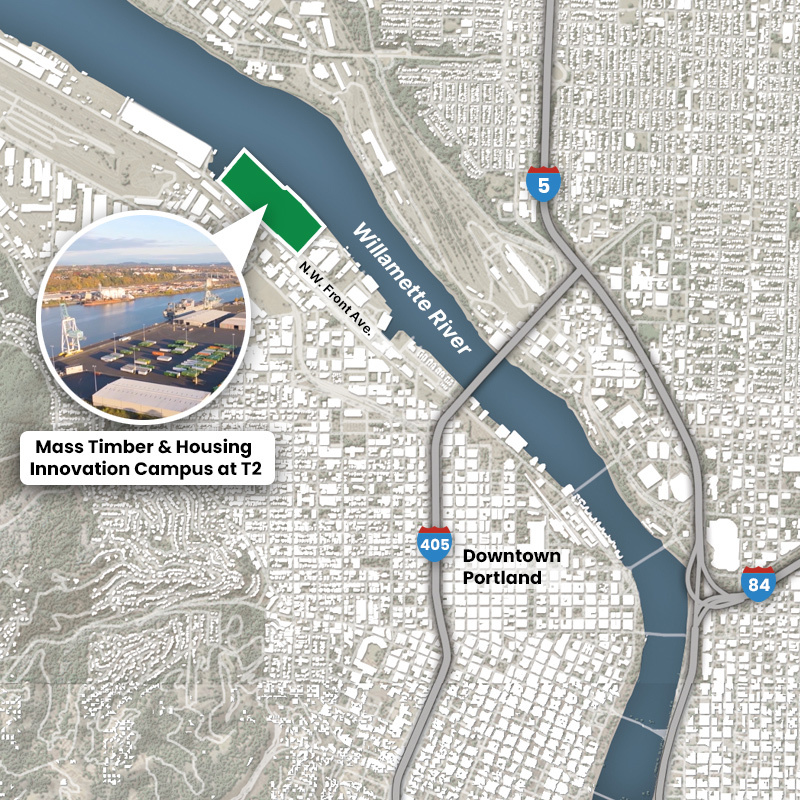
Ken: The Port has developed over 5,000 acres of industrial land in our time, so we really are experts in complicated industrial development. And T2 is not an easy site to develop; it’s got some challenges to it. We bring the expertise to tackle a really complex site that another entity might struggle with, because we’ve done it before.
The Port can also be innovative, and that sparks more innovation. Our nine-acre mass timber roof at PDX bent the boundaries of what you can do with mass timber. It really made local companies think, if we did this here, what if we did this in a commercial building? Freres Engineered Wood, Timberlab – they all learned from being involved in that mega-project.
Recently we brought top developers in Washington and Oregon to T2, and we had our Oregon Mass Timber Coalition partners and our business partners pitch to them about what they’re doing. Freres got to book a business out of that, and Timberlab got to book a business out of it, too.
So there are a lot of different ways we connect people and businesses, locally but also globally, that go beyond our development expertise.
6. Who is or will be operating at the campus?
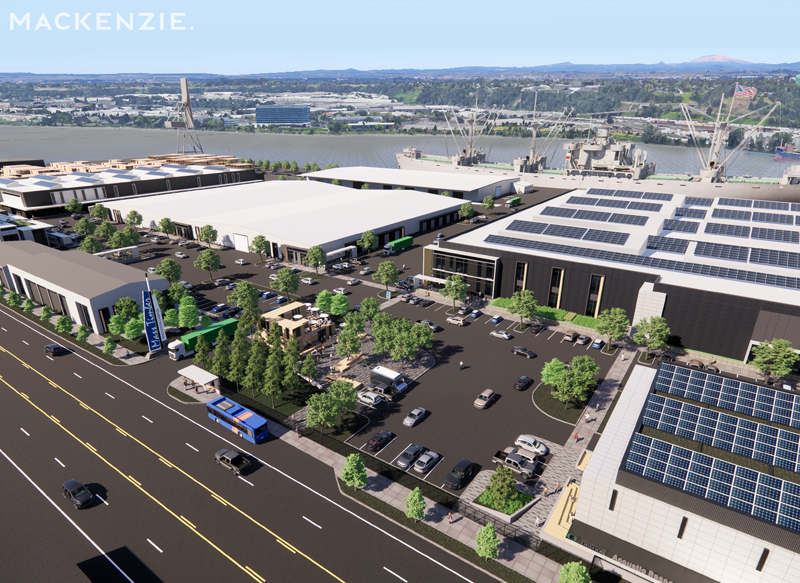
Ken: We wanted to focus first on having two anchor tenants. One is the research and development piece, and that’s the University of Oregon’s acoustic research laboratory. They are going to test mass timber acoustical panels, which is really important for multifamily housing. You need to make sure there’s no sound transmission between the panels to the upper floors of the building. (Construction is anticipated to start in 2026.)
We also wanted to have a manufacturing anchor, and that’s Zaugg Timber Solutions, a Swiss-based, family-owned company that’s been in business for about 100 years. Zaugg has remodeled an existing building and will be moving in this year. Then they’ll start housing production out of that building in January of 2026.
They’re pioneers in mass timber, and they’re bringing to T2 their digital fabrication – their way of producing not only modular mass timber housing, but industrial and commercial buildings. They’re also sending a cohort of Pacific Northwest workers to Switzerland to get trained, and then they will bring that expertise back to the U.S.
Right now we also have early activation tenants: These are small businesses trying to grow the Oregon economy, employing local people. And we rent space to some trucking firms, so you’ll see their containers stored out there, to generate revenue as we develop the site.
7. What else is on the horizon for the Mass Timber and Housing Innovation Campus?
Ken: We’re asking for Congressionally directed funds that would allow for the expansion of the electrical and gas and utility backbone, for Phase Two of the project.
Our coalition is also invested in doing pilot projects around Oregon to make sure that local zoning conforms and allows for modular construction and mass timber. You can build all you want in the factory, but unless you have a place to put them on the ground, you’re not solving any problems. Not a lot of cities have permitted large modular projects, so they have to be brought up to speed.
8. Is there anything else you want to add?
Ken: The thing I’d leave people with is that this is going to be a beautiful campus of mass timber buildings that will showcase how you can use this material instead of concrete to build housing that people need: Sustainable, fire resilient, close to net zero. So if you’re a building geek, you’ll love it. If you’re a people person, you’ll love it.
And mainly it’s about helping the people of Oregon, on multiple levels, from cool jobs to business opportunities to housing. We want to be an example for the country of what can be done to address a housing crisis. It’s not going to solve everything, obviously. But it can be a good model for showcasing what’s working, and something we can be proud of for years to come.
